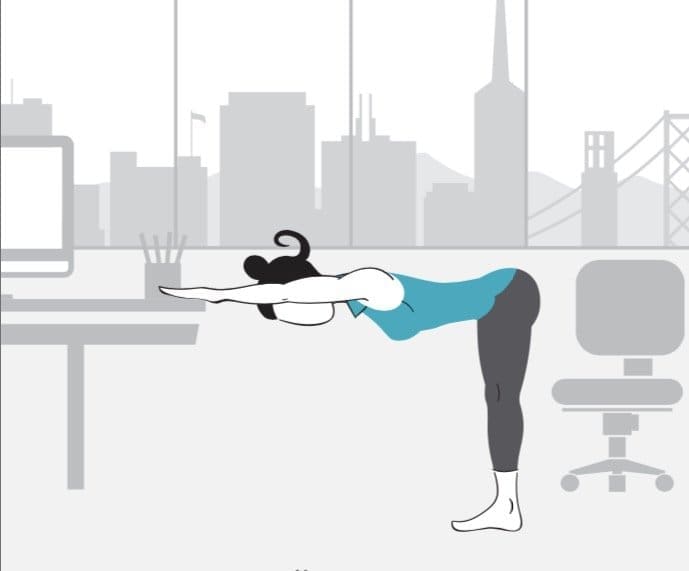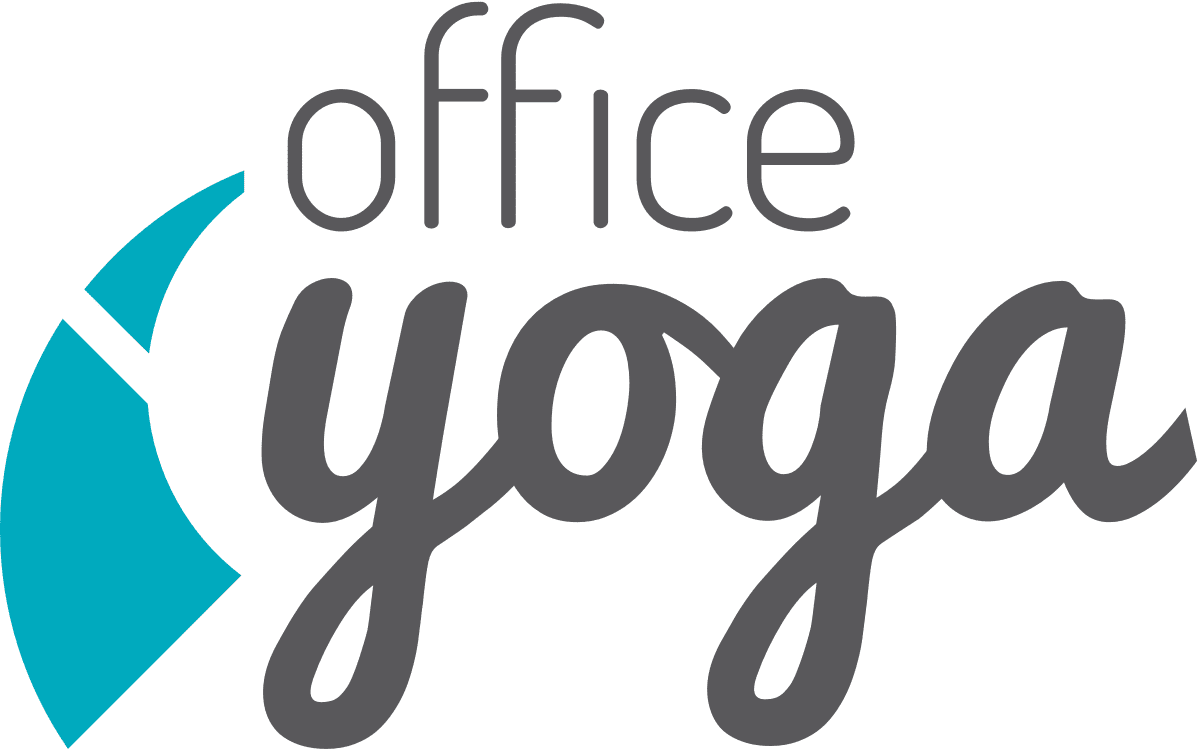Downward Dog
Office Yoga® Downward Dog
Not all Office Yoga® sites have the time or space to get on and off the floor. So how do you accommodate a group of people with these particular limitations and still receive the benefits of a traditional yoga practice? Office Yoga® has spent time with licensed physical therapists from Renew Physical Therapy and medical doctors from Columbia University to break down the benefits of Downward Facing Dog (adho mukha svanasana), a popular and beneficial posture.
Benefits of Downward Dog
 According to B.K.S. Iyengar, Downward Facing Dog (adho mukha svanasana) helps eradicate stiffness around the shoulder blades and relieve any tension or arthritic pain in the shoulders. The abdominal muscles are drawn toward the spine and strengthened. As the diaphragm is lifted to the chest cavity the heart beat slows down. This is a great pose for runners as it lengthens the hamstrings and relieves pain and stiffness in the heels. It also strengthens the ankles and tones the legs.
According to B.K.S. Iyengar, Downward Facing Dog (adho mukha svanasana) helps eradicate stiffness around the shoulder blades and relieve any tension or arthritic pain in the shoulders. The abdominal muscles are drawn toward the spine and strengthened. As the diaphragm is lifted to the chest cavity the heart beat slows down. This is a great pose for runners as it lengthens the hamstrings and relieves pain and stiffness in the heels. It also strengthens the ankles and tones the legs.
Office Yoga® Variation
Not all Office Yoga® students have the space or ability to do downward facing dog. Steve Mongiello, owner of Renew Physical Therapy, and I broke down the benefits of the pose and adapted it to fit the students and space. Here’s how to get into the pose:
- Stand by a desk or conference table with both hands flat on the table, shoulder distance apart
- Step your feet back until your spine is parallel to the floor
- Widen your stance until your feet are hip distance apart
- On an inhale, lift your tailbone slightly and feel the hamstrings in the back of the legs lengthen
- On the exhale, lengthen through the side body
Hold this pose for 5 breaths. Feel the spine hammock from hips to shoulders. Option to bend at the knees or widen the hands.
This office yoga variation gives the student the same benefits that B.K.S Iyengar notes in Light on Yoga while accommodating the environment and ability. Every office has a table, chair or wall that can be used. A table is the most beneficial prop because it’s stable (unlike a chair) and allows the wrists to lengthen (unlike the wall).
This variation is a great intro to downward dog for beginners, which happens to be the majority of our Office Yoga® students. For experiences practitioners, this allows for better access to the parts of the spine that may feel stiff or inaccessible.
Want Office Yoga® classes at your work? Contact us at info@officeyoga.com for class options and scheduling!

